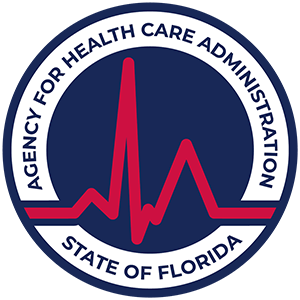The Benefits of Art Therapy for Teens in Addiction Recovery
Art therapy offers a unique approach to teen addiction recovery. It helps teens express emotions, reduce stress, and build self-awareness. Learn how this creative outlet supports healing.
Art therapy can be a valuable asset in addiction recovery, offering several benefits that complement more conventional treatment methods such as Cognitive Behavioral Therapy (CBT) or medication. It is especially helpful for teens—providing them an outlet to release stress, manage cravings, and express themselves creatively.
Read on to understand what art therapy is and how it can benefit teens recovering from substance abuse.
What is Art Therapy?
According to the American Art Therapy Association (AATA), art therapy is an approach to mental health and substance abuse treatment that helps teens express themselves through nonverbal, imaginative, and creative exercises. These activities include drawing, painting, dance, and music, among others [1].
Art therapy is considered a “complementary and alternative medical practice,” which refers to non-mainstream mental health or substance abuse treatments. It is often used in addition to conventional therapies such as Cognitive Behavioral Therapy (CBT), Dialectical Behavior Therapy (DBT), or Trauma Therapies such as EMDR.
Engagement in art therapies can help teens in addiction recovery process intense emotions that they struggle to express in typical talk therapies. This healthy form of emotional release is a crucial step in overcoming and healing from addiction.
Besides substance abuse, art therapies have also shown to be effective in supporting teens with a wide range of mental health challenges, including:
- Depression
- Anxiety
- Trauma and Post-Traumatic Stress Disorder (PTSD)
- Obsessive Compulsive Disorder (OCD)
- Bipolar Disorder
How Does Art Therapy Work?
Art therapies are guided by a licensed art, music, or dance and movement therapist. The art acts as a bridge of communication between the teen and their therapist. It helps create a dialogue between them, allowing the teen to share with the therapist what they may otherwise be unable to express verbally.
Examples of therapeutic art projects could include painting how they see themselves, making puppets or figurines to discuss difficult topics, building a collage that represents their feelings, or creating an interpretive dance to convey sadness or anger.
Art therapy is often offered to teens during a residential substance abuse treatment program, where they can connect with their peers—or in an outpatient program to prevent relapse and support their long-term sobriety.
Types of Art Therapy
The process of creating art and emotional expression is unique for each youth. There are several forms of art therapy that may be used to support teens in addiction recovery. These include:
Visual Arts can help teens explore their identities and bring their feelings to life through physical works of art.
- Painting
- Drawing
- Sculpting/Pottery
- Scrapbooking
Expressive Writing may help teens organize their thoughts and express themselves in a creative yet structured way.
- Poetry
- Journaling
- Creative storytelling
Movement-based therapy helps teens in recovery release pent-up emotions, reduce physical or emotional stress, improve their mood, and manage withdrawal pain.
- Dance
- Music
- Drama therapy
Benefits of Art Therapy for Teens
Through structured creative expression, teens can discover new ways to heal and find strength in their journey toward long-term recovery and success. There are several benefits that art therapy offers teens recovering from substance abuse and mental health challenges.
Reduces Stress
Making art can help promote relaxation and lower stress levels in teens. A recent study by Drexel University found that 75% of participants had lower levels of cortisol (the primary stress hormone) after just 45 minutes of art creation [2]. Reducing stress levels is essential for managing triggers that can lead to cravings and relapse.
Emotional Expression
Teens may struggle to express themselves verbally due to fear, shame, stigma, or simply a lack of communication skills. Art provides a healthy outlet for them to express their emotions and make sense of what they are feeling. It can be especially beneficial for teens who struggle with:
- Social anxiety
- Trauma
- Language barriers
- Communication challenges (e.g. such as teens on the Autism spectrum)
Builds Self-Awareness
Through creating art, teens can gain insights into their thoughts, feelings, and behaviors. It can make them more aware of their triggers and underlying challenges that contribute to their addiction. Developing this deeper level of self-awareness can be helpful when creating strategies for maintaining long-term sobriety.
Increases Self-Esteem
Completing art projects can help teens set new goals and provide them with a sense of accomplishment. In the process, they may discover new talents, passions, or interests about themselves. Witnessing personal growth in their creative abilities can boost their confidence and increase their self-esteem.
Foster Connection
Many forms of teenage art therapy are offered in a group setting with peers their age. Creative projects can promote a sense of community and support for teens undergoing recovery together.
Improves Cognitive Development
Research shows that making art can engage several regions of the brain that play a key role in teenage development, such as the pre-frontal cortex. Art therapy can help teens boost their creativity, enhance their problem-solving skills, increase motivation, and improve emotional regulation [3].
How Can Art Therapy Support Teens Recovering from Substance Abuse?
Art therapy in addiction recovery focuses on helping teens identify triggers related to substance abuse, regulate their emotions, and process distress. Emerging research shows it can also prevent relapse by acting as a positive outlet to reduce cravings. It can also decrease feelings of isolation, a driving factor behind addiction [1].
Teen Residential Treatment in Florida
Lotus Behavioral Health is a residential treatment center located in Florida designed to support teens and their families with the tools they need to recover from substance abuse & co-occurring mental health disorders. Along with conventional therapies such as CBT and DBT, we also offer art therapy to help teens manage triggers, cravings and prevent relapse.
Our residential treatment center offers several levels of care, including residential treatment, partial hospitalization, and intensive outpatient services, to meet the needs of teens and their families at all stages of recovery.

Sources
[1] The Use of Art and Music Therapy in Substance Abuse Treatment Programs. 2014. National Library of Medicine.
[2] At any skill level, making art reduces stress hormones. 2016.Drexel University.
[3] Art and brain: insights from neuropsychology, biology and evolution. 2009. National Library of Medicine.














.svg)









